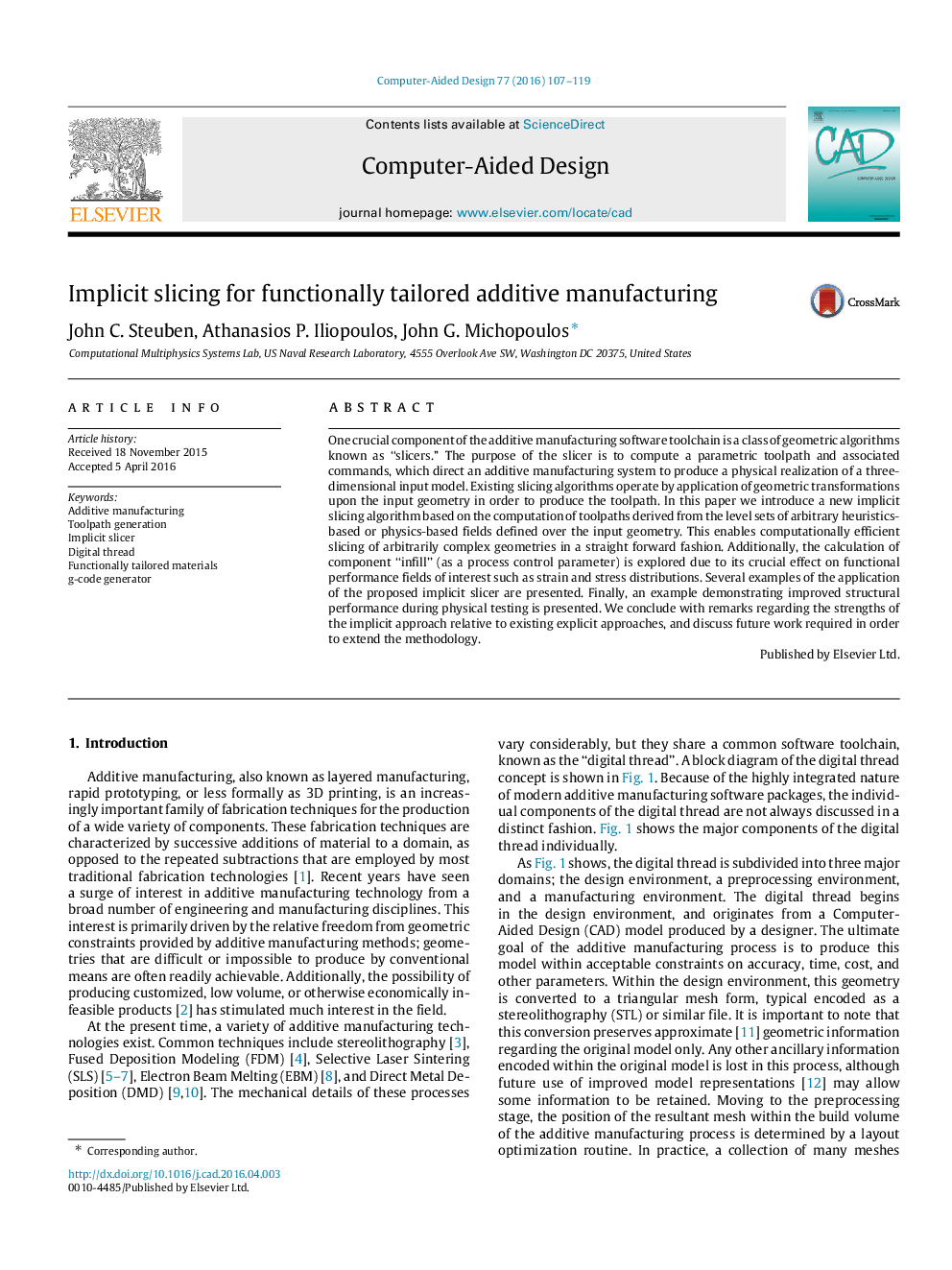| کد مقاله | کد نشریه | سال انتشار | مقاله انگلیسی | نسخه تمام متن |
|---|---|---|---|---|
| 440699 | 691222 | 2016 | 13 صفحه PDF | دانلود رایگان |
• A novel implicitly-defined slicer for additive manufacturing (AM) is developed.
• The implict formulation allows for slicing based on design intent.
• The slicer is intended to produce components with tailored functional properties.
• A large improvement in the mechanical properties of AM components is demonstrated.
One crucial component of the additive manufacturing software toolchain is a class of geometric algorithms known as “slicers.” The purpose of the slicer is to compute a parametric toolpath and associated commands, which direct an additive manufacturing system to produce a physical realization of a three-dimensional input model. Existing slicing algorithms operate by application of geometric transformations upon the input geometry in order to produce the toolpath. In this paper we introduce a new implicit slicing algorithm based on the computation of toolpaths derived from the level sets of arbitrary heuristics-based or physics-based fields defined over the input geometry. This enables computationally efficient slicing of arbitrarily complex geometries in a straight forward fashion. Additionally, the calculation of component “infill” (as a process control parameter) is explored due to its crucial effect on functional performance fields of interest such as strain and stress distributions. Several examples of the application of the proposed implicit slicer are presented. Finally, an example demonstrating improved structural performance during physical testing is presented. We conclude with remarks regarding the strengths of the implicit approach relative to existing explicit approaches, and discuss future work required in order to extend the methodology.
Journal: Computer-Aided Design - Volume 77, August 2016, Pages 107–119
